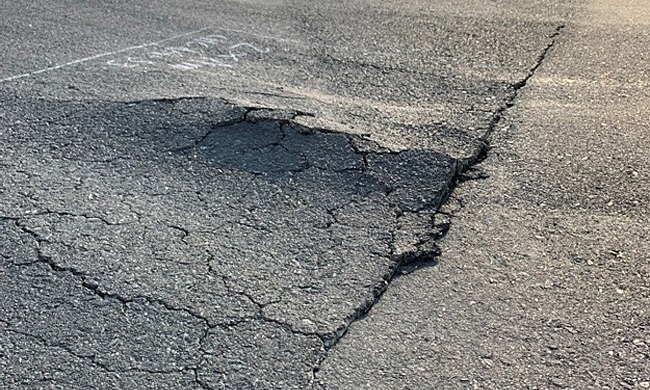Airports Corporation of Vietnam (ACV), which runs all 22 civil airports in the country, has written to the Ministry of Transport and its direct manager, the Committee for Management of State Capital at Enterprises, seeking government approval to repair downgraded runways and taxiways at Vietnam’s two largest airports in Hanoi and Ho Chi Minh City.

A subsided section of a taxiway at Noi Bai International Airport in Hanoi in August 2019. Photo by VnExpress/Anh Duy.
According to ACV, a joint-stock company with 95.4 percent state-owned shares, several taxiways and runways at Noi Bai and Tan Son Nhat international airports have been seriously downgraded since 2017 due to overload, posing a risk to aviation safety.
A transport ministry report in September stated there were serious cracks, factures, subsidence and material falling off expansion joints between concrete slabs as a result of overuse beyond designed capacity.
It estimated runway and taxiway renovation costs for both airports at around VND4.5 trillion ($195 million).
Shortly after the report, the government directed reparation of runways and taxiways at both airports be completed by November last year.
However, no work has been carried out, as the state failed to allocate funds towards the project. According to current regulations, as both runway systems belong to the aviation asset managed by the state, they must be repaired using state budget.
ACV confirmed if no repair work is carried out, downgraded runways and taxiways must be shut down.
To solve the problem, the company suggested using the differences between income and expenditures it has managed from operating airports to cover part of reparations.
For the rest, ACV would make advancements by using the sum accumulated from its own business activities.
If the government approved its plan, the company could complete repairs at Tan Son Nhat in 23.5 months and at No Bai in 26.5 months.
Inspections of Noi Bai International Airport in August last year found two tire marks, each 1-meter wide, on one major runway, potholes 30-50 cm wide and some subsidence on a parallel runway.
Runways at Tan Son Nhat are also congested and not equipped to handle new planes that are getting larger and heavier, the ACV stated in a report last year.
Tan Son Nhat, the largest airport in Vietnam, received more than 40 million people in 2019, 1.6 times higher than its intended capacity of 25 million per year, while Noi Bai handled 29 million compared to design capacity of 21 million, official data revealed.
Cre: VnExpress
Nguyen Xuan Nghia – COMM






